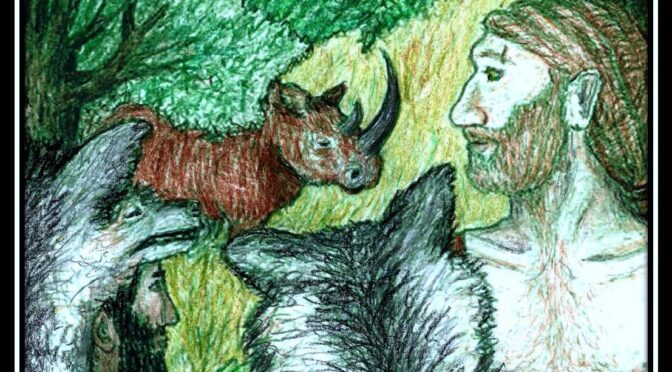I had never thought about recreating the voice of a Neanderthal man until I considered recording my books into an audio format. It then became apparent that I faced some challenges.
- My books are written as a narrative and the main character is a man. As a woman, even if I had a really bad cold, I don’t think I could pass myself off as a male speaker. And….
- The main character is a Neanderthal and there have been numerous opinions on the quality of their voices. So what did they sound like?
- Can I use a software that will change my voice so I will sound something like a Neanderthal man? Hmmm…..
This has led to many hours of research. I’m not a scientist, but I have a lot of pertinent formal and informal study under my belt as part of writing a prehistoric book series. Like many, I was amused by the Neanderthal High-Pitched Voice hypothesis, which was based on the find of a single Neanderthal hyoid bone. (Spoofed here.) Later, it was discovered that the hyoid bone doesn’t really have as much effect on the quality of the voice as thought, but rather it is the vocal tract, oral/nasal/sinus/chest cavities that give us our unique sound. The Neanderthal had ample quantities of all these things, which leads me to believe that they had full voices – and could be quite loud, if they so chose.
______________________________________________________________________
To add perspective, think of dog breeds and their various barks; a Saint Bernard, which has a large head, muzzle, throat and chest has a different voice as compared to a relatively gracile Collie. That being said, as a hunting people, silence was more apt to be desired. I would have guessed them to be a quiet, soft-spoken people in most instances. I would therefore give my character a mid-range husky voice.
__________________________________________________________________
Also, yet another clue: research indicates that Neanderthal hearing ranges “show that Neanderthals had a similar capacity to us to produce the sounds of human speech, and their ear was ‘tuned’ to perceive these frequencies.”
Recent genetic studies has brought up the differences between modern human’s speech genes and Neanderthal speech genes. We all have/had the FoxP2 gene, but the Neanderthal (and Denisovans) had genetic variances that are thought to affect the vocal tract. However, that doesn’t concern me very much. Humans have undergone a lot of changes – genetic and otherwise – over the millennia. I’ve read (although I couldn’t find a link to the exact quote) that the Neanderthal and early Homo sapiens were much more genetically similar to one another than early Homo sapiens would have been to today’s people. And, as one of the world’s most renowned Paleoanthropologists John Hawks says in his Feb. 2024 article,
___________________________________________________________________
"Today we have a lot more information about the variation of FOXP2 but little clarity about its possible importance. The protein coding sequence of FOXP2 differs slightly between chimpanzees and humans, but the protein sequence does have some variation across humans worldwide. In fact a fraction of people today have the same coding sequence found in Neandertals, showing that the gene itself worked very much the same in ancient and living groups."
(Fascinating article!) Considering that Neanderthal have other known gene discrepancies, like the one for red hair and light skin, it shouldn’t be a surprise when Neanderthal variations come to light.
Prof. Hawks’ article also addresses many aspects of the Neanderthal’s brain shape and supposed organization- we can only guess at how it was organized. Here, he says,
_________________________________________________________
"Those shape differences that were so important to nineteenth-century anthropologists don't seem to make any difference to how brains work. With large studies in recent times, neuroscientists have a more detailed picture of variation of brain form. Variation in overall brain volume, cortical gray and white matter, and the relative sizes of some cortical regions all have been found to correlate with various cognitive or behavioral measures. But the variations of endocast and cranial shape once studied by anthropologists do not correlate with those internal measures of brain structure. Could Neandertal brains have worked just the same as today's people, despite their difference in shape? I think that whatever differences existed would have involved details of the internal structure of the brain, probably unmarked on the inner surface of the skull. One variable we can measure does relate to function within living human populations: brain size. In this measure, Neandertals and recent humans were more or less the same. The way the Neandertal brain worked may not have been exactly the same as ours, but I bet we will find they were not as different as many scientists once imagined."
This reinforces the idea – backed up by the evidence of their social behaviors such as care of their young, sick, and elderly, interring their dead, manufacturing of tools, 3-ply twisted twine, glues, distilling tars and oils, etc., etc., – that they were an intelligent, resourceful people who had sufficient physical and mental capacity to converse. And, it occurs to me that the Neanderthal brain shape was possibly due to its skull shape, which placed the brain in a position where it would be most protected behind the heavy brow. This would have been an important benefit for a people with an extremely active lifestyle, whose activities included a lot of close contact with very large and potentially very violent animals.
XXX
I’m still experimenting, but this is what I’ve come up with (so far). See what you think of the voice as recorded in this video. It still needs work, but it’s a start.
_________________________________________________________________________
My plan is to set up a Patreon page that will feature posts about the books, the characters, the Ice Age, and much more! This will include serial audio releases of each book, chapter by chapter, and discussions about them.
Stay tuned for more information!
________________________________________________________________

Photo by Paula Krugerud Photography
Total Page Visits: 4095

